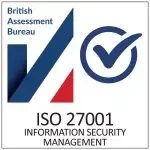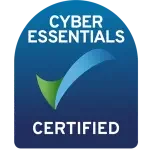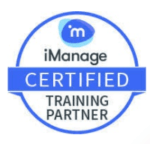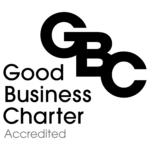
With our LMS you can provide a level of choice to learners and give them control over their learning experience by providing options in LMS Learning Paths and assigned curriculum. By using our equivalence feature in your learning plans, it’s possible to allocate various types of content that are regarded as equal, in terms of the training on offer to your learners.
IN THIS ARTICLE...
Adult Learning Theory – Andragogy
In 1980, Malcolm Knowles made 4 assumptions about the characteristics of adult learners (andragogy) which are different from those made about child learners (pedagogy). Then in 1984, Knowles provided an example of applying andragogy principles to the design of personal computer training and one of those elements is:
Why use Equivalence in Learning Paths?
It is widely recognized that people learn in different ways and have diverse learning styles. Some like to read content, some prefer to watch a recording of a lesson and others want to be taught in person so they can ask questions and interact in more detail.
Based on this understanding and the principles laid down by Knowles back in the 80s, it is important for educators and L&D teams to provide a choice of learning path, for people to take and achieve their training goals.
How to offer choice in Learning Management Systems
In this video, our Head of Customer Success (Julie Campbell) takes a deep dive into Equivalence in Learning Paths and how you can offer multiple courses to give learning choices to your Learning Management System (LMS) learners.
Read on below for the full transcript, if you are one of the learners who prefer to read the information and take it on board that way…
Equivalence in Planned Learning Journeys
Alright guys, let’s talk about equivalence in learning paths. This was you know, we opened up a poll a while back, and we had like a long list of deep dives that we were going to kind of address month after month and equivalence was one of the things that people thought “you know, I could use a little refresher on equivalence” – so that’s what today is going to be about, equivalence in learning paths.
What is an LMS Learning Path?
A learning path is a curated list of courses, a planned learning journey, or a curriculum if you will. It’s like providing a journey for your learners, and a lot of our clients use these learning paths as required learning for their new hires for example. It’s like they need to do A, B, C, D, and E; and they must do them. We try to provide an expiration date so that really kind of pushes the idea of a due date – that sort of thing.
What is Equivalence in Planned Learning Journeys?
Equivalence, even though learning paths really do sort of present people with a list of things that they’re expected to do or that they were offering for them to do, what equivalence does is offer options. So that’s what’s all about, it’s options.
There is a learning theory, most of you know about this more than I do because you’re in the learning development world and I’m just kind of starting in the learning and development world.
Knowles’ adult learning theory, says that – because they’re capable adults should be offered the option to direct their own learning – and that’s all about self-direction and we know that self-direction is kind of key in learning instructional design and in adult learning.
Even in childhood, I used to be a Montessori teacher, so I know very well how Doctor Maria Montessori kind of believed children should be observed in the classroom and she believed that kids learn best when they’re able to be free to move around. They’re able to choose their own work, they’re able to follow their own interests, and that’s really the same for adults in theory.
Research really does support that concept. It shows that learners who have control over their learning tend to be more successful in online learning environments.
In the LMS we fully support that concept. We allow learners to come in, they search, they browse, they’re able to kind of pick what they need.
However, in the context of the learning path that kind of is in opposition to that theory, right? I mean, the learning path, we’re kind of presenting what we expect people to do, we’re taking away that control in a lot of ways.
LMS learning paths are necessary and they’re a welcome tool, providing that nice curated list of requirements. It’s a nice convenient tool for learners, to kind of provide it in a nice clean little bow-tied bucket right, and it’s a great tool for the organization to be able to track those requirements and track the progress of somebody within that bucket. But in fact, we’re kind of taking away that control.
So what equivalence does is give back just a little titbit of control to the learner, that’s the idea to give your learner some options.
The learning path equivalences tool that we’ve got for you guys is just a very basic tool, it doesn’t have a lot of layers. It is just kind of on or off. Once it’s on, it works globally on the path.
So if you turn on equivalence in the path and you assign equivalence to a particular folder in the path, well it’s on and equivalence means that one equivalence folder is going to be equal to another equivalence folder, which will be equal to the other. So if you have 4 equivalence folders, they’re all equal to each other. That’s the way equivalence works, there are no layers, but it can be a handy tool.
How does Equivalence work in Learning Paths?
The basic premise of a standard learning path, is that let’s say you have course 1, course 2 and course 3. Let’s assume all of those courses are required. You don’t have to have them all required but we’re going to make some assumptions here, that they’re all required.
The idea of a learning path is that when your user has completed all of these three required courses 1, 2 and 3 the path will be marked complete. Complete the paths when they’ve completed 1, 2 and three – that’s the idea. Learning paths ensure people complete the assigned curriculum they have.
So suppose the third course, for example, is a live event. It’s a scheduled course, so it’s going to be kind of a set of live events that are available for the users to pick based on this topic. It’s going to be the first steps for new hires, let’s just assume that…
OK let’s say that you want to give your learners an option, to not have to attend the scheduled event. Maybe there’s an alternative to the scheduled event they could alternatively take a SCORM course, it’s the same topic and you’re saying when you establish that equivalence that folder A equals folder B.
They still have to complete 1, 2 and 3. But at the three-level, they have two choices. They can complete one and two and then they have a choice to do either Folder A or Folder B.
So let’s add a layer of complexity to the concept here. Right here we’re seeing Folder A and Folder B equal each other and that’s kind of obvious, right? So that means that you’re going to be marked as complete if you do one and two and the SCORM course. Or you’ll be marked as complete if you do one and two and the scheduled course. Either way, you’re going to be marked as complete.
But let’s say that you add another layer, another idea. You can have additional folders that are considered equivalent. You can’t have multiple equivalencies inside of a single path. It’s equivalence and it’s one equivalent.
So what I mean by that is, you could say, I’ve got three alternatives to the SCORM. A is the SCORM and then B is the scheduled course and C could be some other course that’s also equivalent. And D could be a third thing or a four thing that’s equivalent to the others. So you can establish multiple equivalence folders within the same path. But they all have to be equal to each other.
How to use Equivalence in LMS Learning Paths
Inside of the LMS if we were looking at this. This is what it would look like, you guys know that inside of the LMS when you go to establish a path. there are three radio buttons, and the third radio button is use equivalence.
These are toggles, so you can’t choose any more than one of these choices, and once you’ve turned equivalence on, then it’s on and then equivalence is aligned with this folder mechanism. And you get into the folder tool by hovering over the plus sign and you’ll see a little folder icon and I can demonstrate that but I want to show a few more things first and then we’ll kind of go into the actual application in a minute.
Once you have created a folder, that folder is given the option of turning equivalence on for it or not, but you could just have a random folder that just has other stuff in it, and it’s not playing in the equivalence realm. But any folder that has equivalence aligned with it, will be marked with a double asterisk like that.
So that means that folder is an equivalence folder and any other folder that has a similar designation will be equal to it.
So this sort of maps the same premise that I was showing you in the slide. Where I’ve got two requirements, 1 and 2 and then an option for A or B, that’s what I’m showing here.
One and two, there’s company policy and assess your knowledge, that’s one and two, and then an option for A or B. When I open up folders A and B, it shows me that folder A includes the scheduled course and Folder B includes the SCORM course.
Give Learners choices in their Learning Journey
So another alternative here with equivalence, is that each folder doesn’t have to just have a single course that equals another single course in another folder. Any given folder can have multiple eLearning courses.
So in this scenario that I’m demonstrating here, we have course 1 and course 2. Those are the required ones that everybody has to do and then you have a choice between folder A and folder B.
Folder A includes that scheduled course and it’s going to be like an hour and a half class, or two-hour class and we’re going to be doing all kinds of things in that class. We’re going to be providing a tour of the LMS, we’re going to be providing some information.
So the scheduled course is going to be more in-depth than just the SCORM and you can provide additional courses for folder B so that folder B has three courses, which equals the scheduled course.
That it’s kind of a great premise right? And you could really put this to use, and what this does is gives your learner some control over their learning journey, which is kind of nice. You know, sometimes you’d like to force an order, you can’t really do that with equivalence. You can’t force an order, but what you can do is provide these options.
KISS your Learning Equivalence
The next scenario or the next advantage of equivalence that some of you have decided to use, some haven’t, is along the lines of or kind of speaks to the KISS principle.
KISS is, Keep It Simple Stupid. It was coined I believe, according to my great research capabilities, by Kelly Johnson. Kelly Johnson was the lead engineer at the Lockheed Skunk Works and they were responsible for the SR71 Blackbird spy planes.
This was all about engineering and design principles and it makes great sense for engineering and design. But I think many of us in the industry kind of follow the principle because it makes sense for almost everything.
We’ve found that most systems actually do work best when they’re kept simple and uncomplicated, and that’s the whole premise. So I thought that this would be a good lead into some scenarios that I see some of our clients following, just in case I can catch some of you that like this idea. I want to see where it takes you.
Examples of Equivalence in LMS Learning Paths
Some of you have scenarios like this, where you have a set of courses across different user roles or different locations that are similar.
For example, course A, B, and C everybody’s got to do them, it doesn’t matter if you’re a California attorney or California staff member or somebody in Nevada, everybody does A, B, and C. But only California attorneys do X, only California staff do Y and only Nevada people do Z. This means that a lot of you are creating three different paths, to accommodate these different people. Equivalence can help you with this scenario.
So you would have an equivalence folder for California Attorneys, an equivalence folder for California staff and another equivalence folder for Nevada.
If that sounds like something that might work for you, to simplify things for the purposes of simplifying those reports and streamlining your thinking and your management of all the paths, this might be a method for you.
This is an example of the scenario that I just showed you. Where we have a California attorneys equivalence folder, we have a California staff equivalence folder and a Nevada equivalence folder. Each one of those folders has all of the required courses that they need, the ones that they share and the ones that are separate and apart. So you can kind of see how that works. This is the way that the path is going to present to the user. Just FYI if you like this sort of KISS concept, then this could really save you guys a lot of time and energy and reporting headaches.
Putting LMS Learning Equivalence into Practice
Alright so here’s my LMS and obviously, we start in the library. You need to set up your courses, get them all kind of ready and then everybody knows to create a learning path, you pop into the second little button.
I am just going to name this my deep dive and then I’m going to just do my description. So I have my path. Once you have a path, you go into your ‘courses’ area to establish what courses live in this path.
Then we have these three radio buttons right here. You can’t choose two of them, they’re radio buttons, so the only option that you can choose when you’re going into equivalence is “use equivalence”.
Then you can hover over the plus sign to see that folder label. You can do it after the fact as well if you want to. So let’s start with the very first scenario that I had, let’s start with adding three courses just one, two and three, with no equivalence at all. So I’m going to add a course by clicking the very first plus sign.
So there’s my company policy, that’s the first thing, and then the next thing is “Assess Your Knowledge”. So those are the two things that are going to be required, that aren’t part of an equivalence necessarily. They’re going to be required and I know that they’re required because that’s the default, but also if I edit it, I can see oh it’s required.
Then I can start adding my folders, if I hover over the plus sign you’ll see a folder icon appears, I’m going to hover again just so you can see that.
“Mandatory for all” and apply it, I’m going to drag it up to the top here. And then I’m going to drag these guys into it. You see I’m kind of hovering and moving, it off to the right. So now those guys live inside of ‘mandatory for all’, so those are the mandatory for alls.
Then I’m going to add two equivalence folders. This is going to be folder A and I mark it as equivalent. And I’m going to add a folder B and mark it as an equivalence.
So you’ll see the ones that are marked as equivalence have those two asterisks. This one doesn’t have two asterisks, so A and B equal each other, and the mandatory for all doesn’t equal anything. Everything within it, they’re required courses, they have to be done, so one and two have to be done and then people can choose A or B.
How do I add courses to A and B? Well, it’s easy, you just click the little check mark next to the folder and then you click the plus sign up here at the top to add a course to it. You could add a course just anywhere in here and drag it in, just like you saw me do for the mandatory one.
So the scheduled course is here, it’s my First Steps Class, it’s an “SCH” scheduled course. That is the first requirement right there, First Steps Class and it belongs to folder A. You can see I can kind of expand and collapse it like that.
So folder B, what belongs to it? Well, I’m going to add the SCORM version of that topic. See if I can find it, so here is my SCORM version for that topic, and what I’m telling people here is that going to the class, is just as good as running the SCORM course.
When I save this I can now use automatic assignment to assign this out just like I normally would, or I can just manually assign it to a person. I’m going to assign it to myself, so I can show it to you.
Here it is, here’s my Deep Dive path and when I launch this, this is the way it appears to me. “Mandatory for all” well I know that this means I need to click here and complete everything in this bucket, so I’m going to go in and complete those, and they’ll get a little check mark. Then all that I have to do to get this path marked fully complete is to complete either A or B.
You can play around with those labels, however you wish, they are your labels and it’s important to note that you can put as many courses and folder A as you need. As long as anything that is in this equivalence folder equals any of the other equivalence folders that you’ve added.
Equivalent Learning and Skills Assessments
As a final thought on equivalence in learning, this idea was raised by one of our CFMs during the webinar recording. Using this equivalent learning path feature you can allow learners to test out of a required subject by completing a skills assessment, therefore proving their existing knowledge of the subject. Alternatively, if they fail that assessment, you could use the equivalence feature to suggest further learning for them in a structured training program.
If you’re looking for a solution to providing equivalence in LMS learning paths and choices for your learners, register for a live demo and free trial of our solutions to see how we can help.
Intellek (formerly TutorPro) is a founding member of the learning technology industry. With a presence in the USA, UK, Canada, and the EU – for over 30 years we have pioneered the development of cutting-edge eLearning software and online training solutions, with a large and diverse portfolio of international clientele.
Disclaimer: We use all the tools available including generative AI to create relevant and engaging content.





